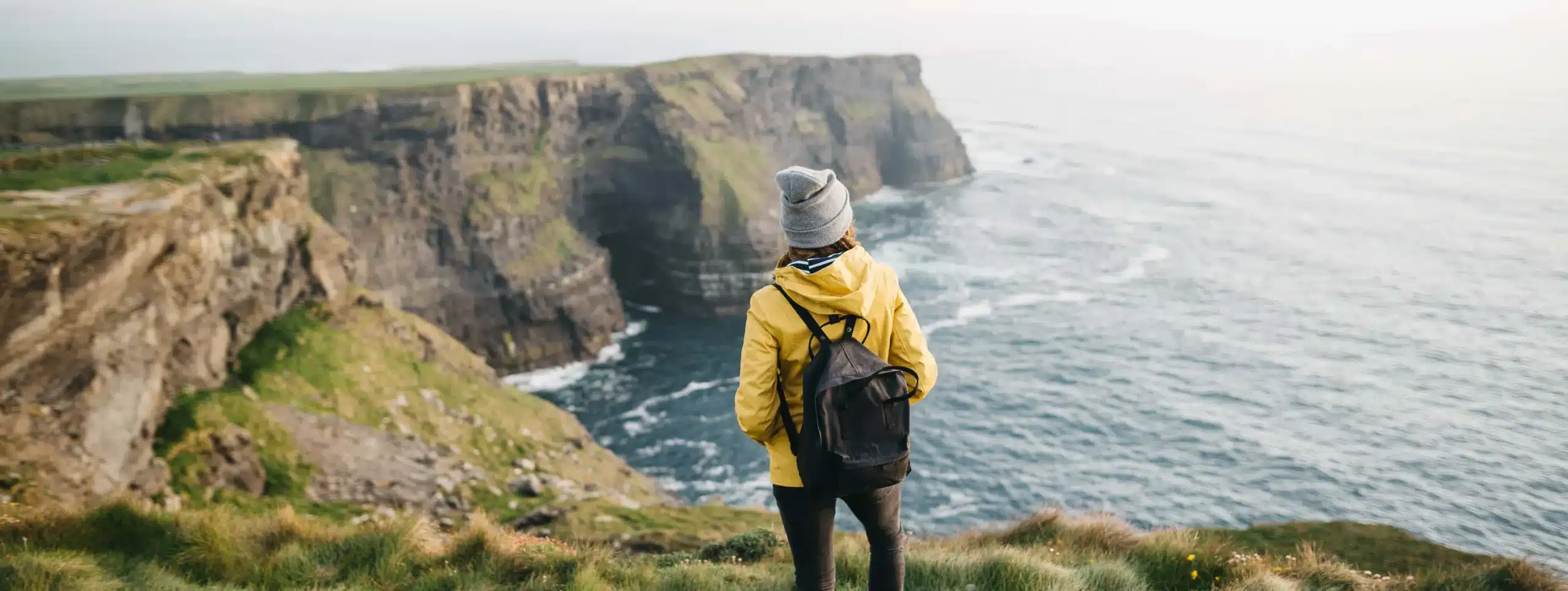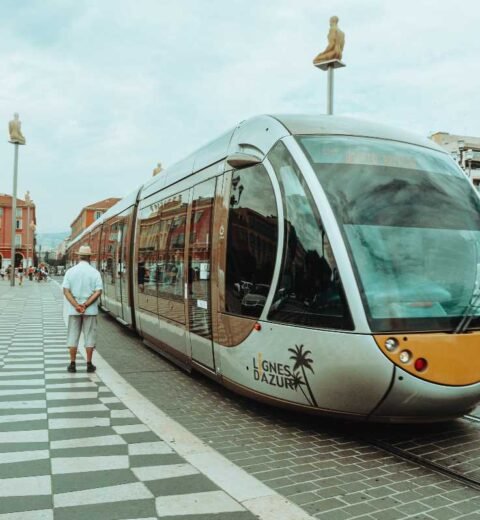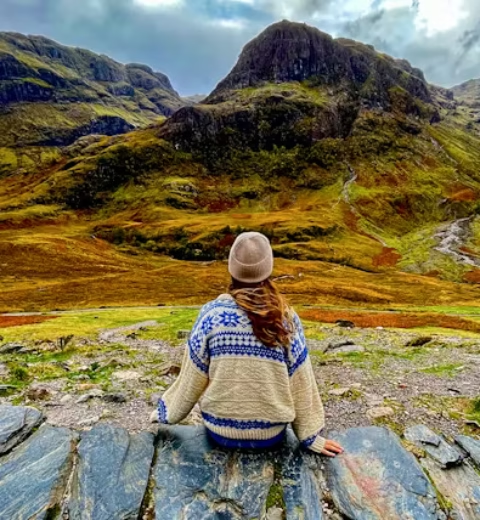Ireland, with its rolling green hills, dramatic cliffs, vibrant cities, and rich cultural heritage, is a dream destination for many travelers.
Whether you’re drawn to the rugged beauty of the Wild Atlantic Way, the historic charm of Dublin, or the warmth of traditional Irish pubs, planning your first trip to Ireland can be both exciting and overwhelming.
This comprehensive guide will walk you through everything you need to know to plan an unforgettable adventure.
Why Visit Ireland?
Ireland offers a perfect blend of natural beauty, history, and culture. From the iconic Cliffs of Moher to the lively streets of Galway, there’s something for everyone.
You can explore ancient castles, hike through breathtaking landscapes, enjoy live music in cozy pubs, and immerse yourself in the stories of Celtic mythology. Plus, the Irish are known for their hospitality, making visitors feel right at home.
Step 1: Decide When to Visit
The best time to visit Ireland depends on your preferences for weather, crowds, and events.
- Spring (March-May): Mild weather, blooming landscapes, and fewer tourists make spring a great time to visit. St. Patrick’s Day in March is a highlight, especially in Dublin.
- Summer (June-August): The warmest months, with long daylight hours, are ideal for outdoor activities. However, this is peak tourist season, so expect crowds and higher prices.
- Fall (September-November): Cooler temperatures and vibrant autumn colors create a picturesque setting. Crowds thin out, and prices may be lower.
- Winter (December-February): While colder and wetter, winter offers a quieter experience and festive events like Christmas markets. It’s also the cheapest time to travel.
Tip: Ireland’s weather is unpredictable, so pack layers and waterproof clothing regardless of the season.
Step 2: Plan Your Itinerary
Ireland is a small country, but there’s so much to see that it’s wise to plan your route carefully. A 7-10 day trip is ideal for first-time visitors to cover the highlights without rushing.
Suggested 7-Day Itinerary
- Day 1-2: Dublin
Explore the capital’s historic sites like Trinity College (home of the Book of Kells), Dublin Castle, and the Guinness Storehouse. Stroll Temple Bar for nightlife and live music. - Day 3: Wicklow Mountains
Take a day trip to Glendalough, a monastic site nestled in a scenic valley, or hike in Wicklow Mountains National Park. - Day 4-5: Galway and Connemara
Head west to Galway, a vibrant city known for its arts scene. Visit nearby Connemara National Park for rugged landscapes and Kylemore Abbey. - Day 6: Cliffs of Moher
Marvel at these iconic cliffs along the Wild Atlantic Way. Stop in the charming village of Doolin for traditional Irish music. - Day 7: Killarney and the Ring of Kerry
End your trip in County Kerry, exploring Killarney National Park and the scenic Ring of Kerry drive.
Tip: Consider staying in a mix of cities and smaller towns to experience both urban and rural Ireland.
Step 3: Getting There and Around
Arriving in Ireland
- By Air: Most international visitors fly into Dublin Airport (DUB) or Shannon Airport (SNN). Both offer connections to major cities in North America, Europe, and beyond.
- By Ferry: Ferries connect Ireland to the UK and France, ideal if you’re combining your trip with other European destinations.
Getting Around
- Car Rental: Renting a car is the most flexible way to explore Ireland, especially for rural areas. Note that driving is on the left, and roads can be narrow.
- Public Transport: Buses (like Bus Éireann) and trains (Irish Rail) connect major cities and towns. They’re reliable but less convenient for remote areas.
- Tours: Guided tours are great for day trips or multi-day adventures, especially if you prefer not to drive.
Tip: Book car rentals or tours in advance, especially during peak season.
Step 4: Where to Stay
Ireland offers a range of accommodations to suit all budgets:
- Hotels: From luxury options like the Shelbourne in Dublin to budget chains like Premier Inn.
- Bed & Breakfasts (B&Bs): A quintessential Irish experience, offering cozy stays and hearty breakfasts. Popular in smaller towns.
- Hostels: Ideal for budget travelers, especially in cities like Dublin and Galway.
- Castles and Manor Houses: For a unique experience, stay in a historic castle like Ashford Castle.
Tip: Book accommodations early, especially for summer travel or popular destinations like Galway or Killarney.
Step 5: Budgeting for Your Trip
Ireland can be moderately expensive, but careful planning can keep costs down. Here’s a rough estimate for a mid-range budget:
- Accommodation: $80–150/night for a hotel or B&B.
- Food: $10–20 for lunch, $20–40 for dinner at a mid-range restaurant.
- Transport: $50–100/day for car rental (plus fuel) or $10–30 for public transport.
- Attractions: Many sites (e.g., Cliffs of Moher) cost $8–15, while some (like national parks) are free.
Money-Saving Tips:
- Eat at pubs for affordable, hearty meals.
- Look for multi-attraction passes in cities like Dublin.
- Travel off-season for lower prices.
Step 6: What to Pack
Ireland’s weather is changeable, so pack versatile clothing:
- Waterproof jacket and sturdy shoes.
- Layers (t-shirts, sweaters, fleece).
- Comfortable walking shoes for hiking or city exploration.
- A travel adapter (Ireland uses Type G plugs).
- A small backpack for day trips.
Step 7: Cultural Tips and Etiquette
- Greetings: A friendly “hello” or “how are you?” goes a long way. Irish people are generally warm and chatty.
- Pub Culture: Buying a round of drinks for your group is customary. Don’t be afraid to join in traditional music sessions.
- Tipping: Tip 10–15% in restaurants if service isn’t included. Tipping isn’t expected in pubs unless you’re dining.
- Language: English is widely spoken, but you may hear Irish (Gaelic) in some areas, especially in the west.
Step 8: Must-Know Travel Tips
- Currency: Ireland uses the Euro (€). Northern Ireland (part of the UK) uses the British Pound (£).
- Visa: US, Canadian, and EU citizens don’t need a visa for stays up to 90 days. Check requirements for other nationalities.
- Safety: Ireland is generally safe, but use common sense in cities, especially at night.
- Connectivity: Wi-Fi is widely available, and SIM cards are affordable for international travelers.
Step 9: Dive into Irish Culture
- Food and Drink: Try traditional dishes like Irish stew, fish and chips, or soda bread. Don’t miss a pint of Guinness or a taste of Irish whiskey.
- Music and Festivals: Catch live traditional music in pubs or attend festivals like the Galway International Arts Festival.
- History: Visit sites like Newgrange, a prehistoric monument older than the pyramids, or the Rock of Cashel.
Ireland Adventure: Cost Breakdown for Every Traveler
Compare three travel styles for a 7-day Ireland trip, tailored to different budgets.
| Category | Budget (€50–80/day) | Standard (€150–250/day) | Expensive (€400+/day) |
| Accommodation | Hostels/Budget B&Bs (€20–40/night) | 3-star hotels/B&Bs (€80–150/night) | 5-star hotels/Castles (€250–500+/night) |
| Transportation | Buses/Trains (€10–20/day) | Car rental/Day tours (€50–80/day) | Private driver/Premium car (€150–300/day) |
| Dining | Pub grub/Self-catering (€15–25/day) | Casual restaurants/Pubs (€30–50/day) | Fine dining/Gourmet (€100–200/day) |
| Activities | Free/Low-cost sites (€5–15/day) | Paid attractions/Tours (€30–50/day) | Private tours/VIP experiences (€100–200/day) |
| Sample Day | Dublin hostel, bus to Glendalough, pub meal | Galway B&B, car to Connemara, pub dinner | Killarney luxury hotel, private Ring of Kerry |
| Total (7 Days) | €350–560 | €1,050–1,750 | €2,800+ |
Final Thoughts
Planning a trip to Ireland is all about balancing iconic sights with off-the-beaten-path experiences. Whether you’re sipping a pint in a cozy pub, hiking through lush landscapes, or exploring centuries-old castles, Ireland’s charm will leave you enchanted. Start planning early, embrace the unpredictable weather, and get ready for a trip filled with unforgettable memories.
Ready to go? Book your flights, map out your itinerary, and let Ireland’s magic unfold!
Ready to Plan Your Dream Trip to Italy?
If you’ve been dreaming of exploring Italy’s breathtaking landscapes, world-famous landmarks, and irresistible food, this guide will help turn that dream into reality!
From planning your itinerary and setting your budget to discovering hidden gems beyond Rome, Florence, and Venice — we’ve got everything you need to make your Italian vacation smooth and unforgettable.
Click the link below to learn step-by-step how to plan your trip to Italy:
How to Plan a Trip to Italy
Whether you’re a first-time visitor or returning for more dolce vita, eurotravelo.com offers expert tips, travel hacks, and detailed itineraries to help you experience Italy like never before. Visit our site and start planning your Italian adventure today!
FAQs
What is the best time of year to visit Ireland?
Spring (March–May) or fall (September–November) offer mild weather and fewer crowds; summer (June–August) is warm but busy; winter (December–February) is cheapest but wetter.
How many days are needed to explore Ireland for first-time visitors?
A 7–10 day trip is ideal to visit key spots like Dublin, Galway, the Cliffs of Moher, and the Ring of Kerry without rushing.
Is renting a car necessary to get around Ireland?
Renting a car offers flexibility for rural areas, but buses, trains, or guided tours are sufficient for cities and major attractions.
What should I pack for Ireland’s weather?
Bring waterproof clothing, layers (t-shirts, sweaters), sturdy shoes, and a Type G adapter, as Ireland’s weather is changeable year-round.
How expensive is a trip to Ireland?
Costs range from €50–80/day for budget travelers, €150–250/day for standard, and €400+/day for luxury, depending on accommodation, dining, and activities.




